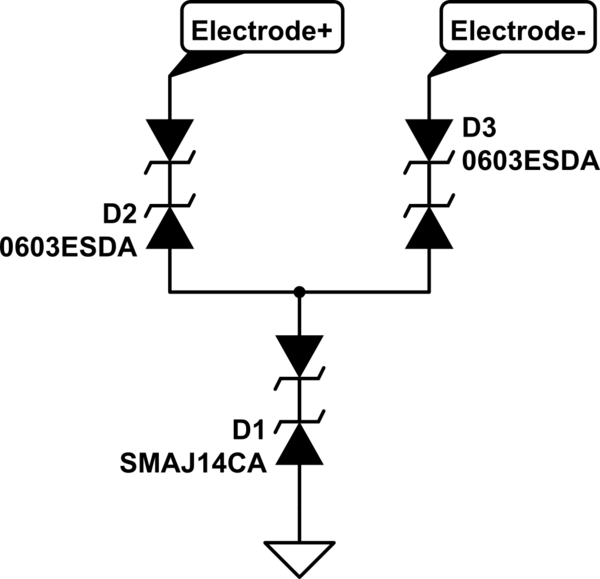I want to puild a pH meter, which uses a normal glass electrode. Such an electrode behaves as a pH dependend voltage source (<+-500mV) with very high internal resistance (10MOhm - 1GOhm, depending on the electrode). As a consequence, the voltage measurement needs to be performed with very low current. Further, I read that current flow can have a significant impact on the lifespan of these electrodes, so keeping it as low as possible is crucial.
I looked around and found a few promising amplifiers with input currents in the femtoampere range - e.g. the INA116, LMP7721, and LMC6001.
However, I'm wondering now how to protect these amplifiers against ESD, since the device will have to pass standard EMC tests for household appliances. Some of the amplifiers have limited protection built-in, but as far as I understand, this is not enough to protect against the tests that are performed on external device connectors. Adding diodes to the power rails or a TVS diode seems to be out of the question due to the substantial added leakage of even low-leakage types.
However, since the voltage source I want to measure has a very high resistance anyway, would the amplifier be adequately protected by a very high resistance (e.g. 10MOhm) series resistor? Or do I have to use a connector / electrode design which mechanically prevents direct contact?

